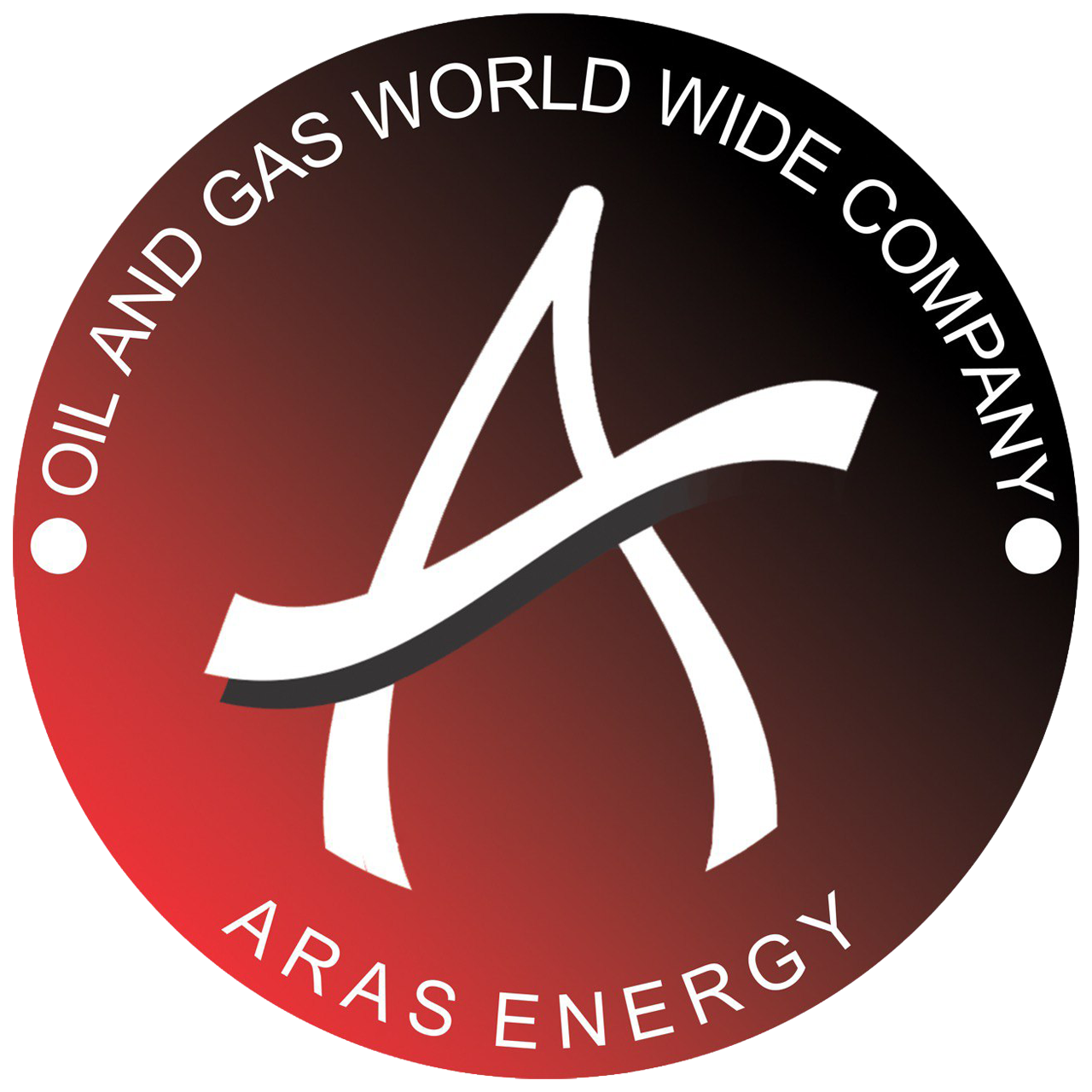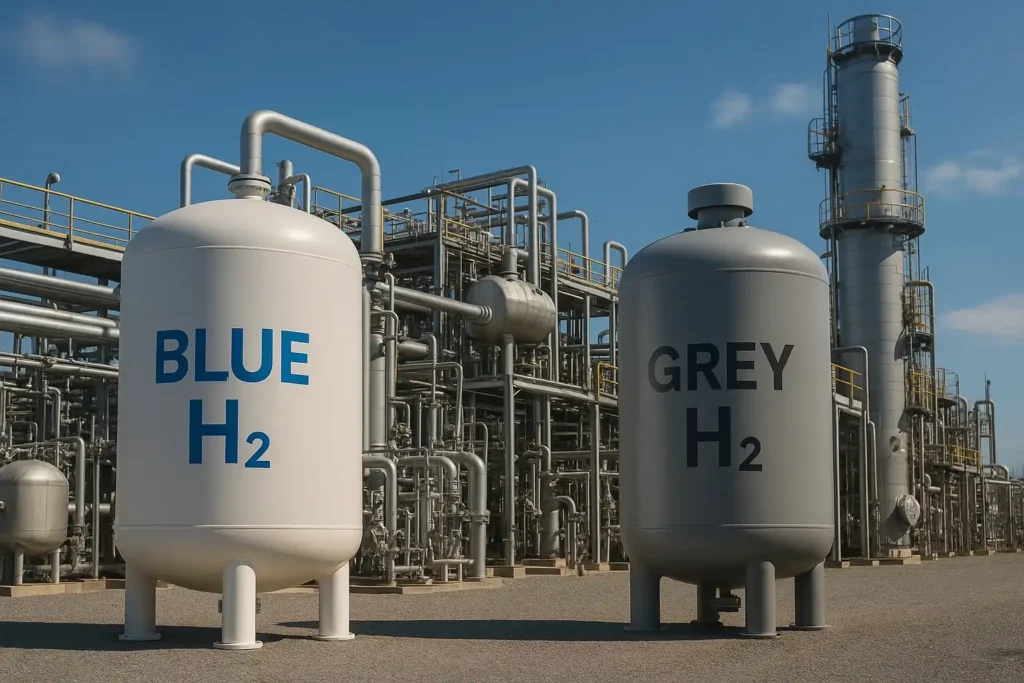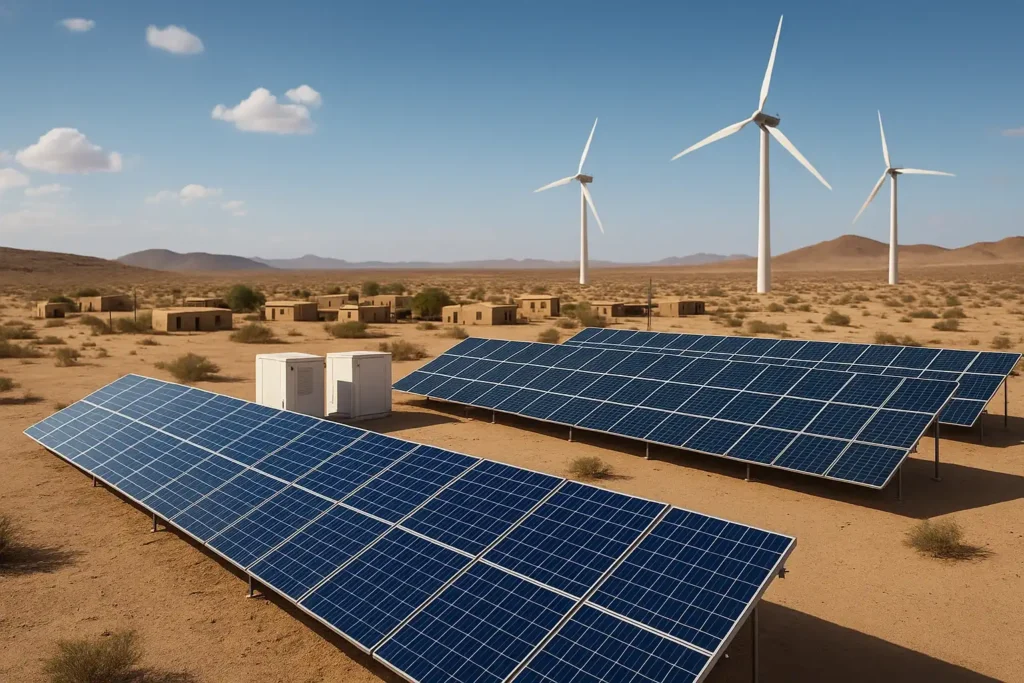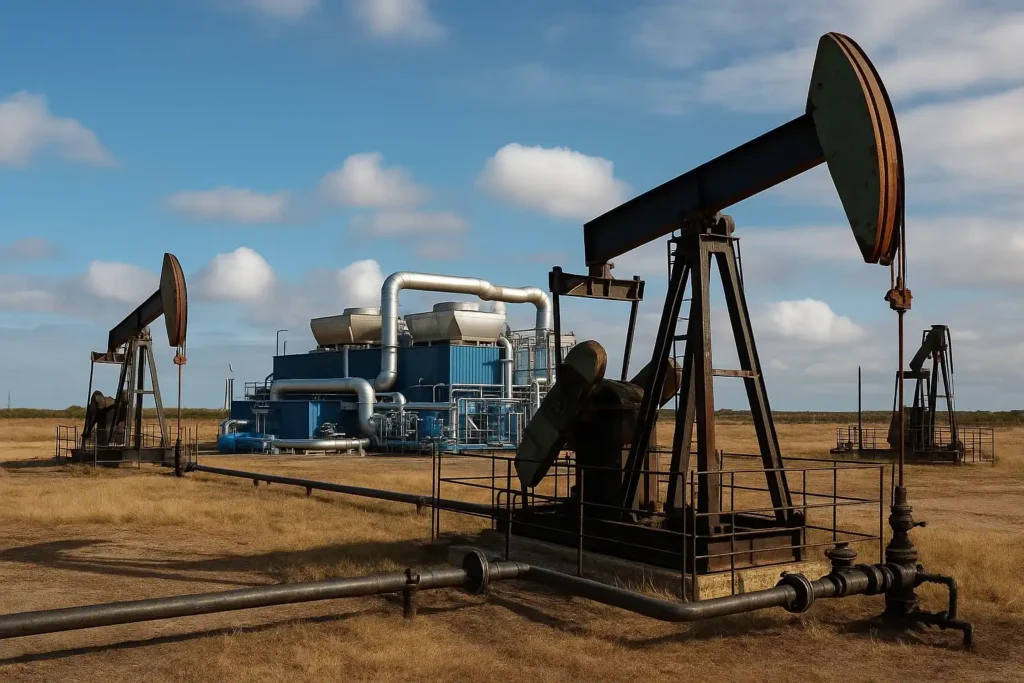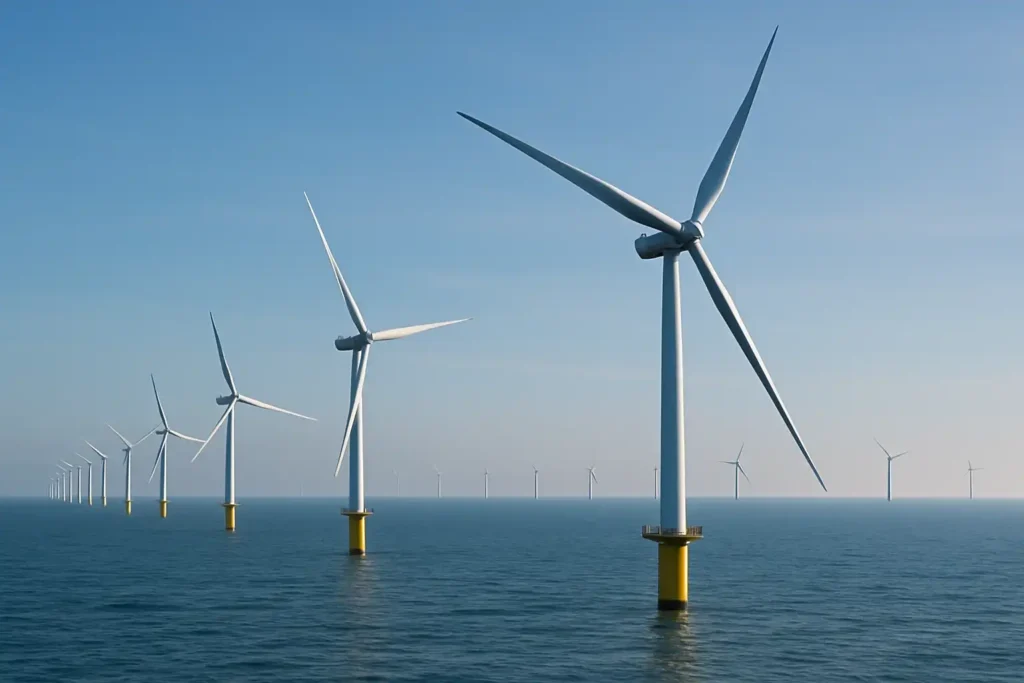On the global path toward a low-carbon economy and Net-Zero goals, hydrogen has gained a strategic position as a clean and flexible energy carrier. Among various types of hydrogen, blue hydrogen plays a key role in the gradual transition from fossil fuels to renewable energy, especially in industries dependent on natural gas.
This article examines the concept of blue hydrogen, its production technologies, its role in reducing carbon emissions in the natural gas industry, advantages, challenges, and development opportunities in global and regional markets (especially the Middle East and UAE).
What is Blue Hydrogen?
Blue hydrogen is produced through steam methane reforming (SMR) or autothermal reforming (ATR) of natural gas. The main difference from gray hydrogen lies in the carbon capture and storage (CCS) stage, where CO₂ generated from production is captured and stored instead of being released into the atmosphere.
Result: Significant CO₂ emission reduction (up to 90%) compared to gray hydrogen production without CCS.
Why Is Blue Hydrogen Important for the Gas Industry?
Natural gas, as one of the main energy sources worldwide, is efficient but also a direct source of greenhouse gas emissions. Blue hydrogen can serve as:
- A partial or blended substitute with natural gas (Blending)
- A clean fuel for refining, petrochemicals, and power generation operations
- A low-carbon feedstock for producing ammonia, steel, and cement
Helping reduce the carbon footprint of the industry.
Applications of Blue Hydrogen in the Gas Industry
🔷 1. Injection into the City Gas Network (Gas Blending)
Countries like the UK, Netherlands, and UAE have launched projects blending 5% to 20% hydrogen with natural gas in residential networks.
🔷 2. Power Generation Using Hydrogen-Gas Turbines
Turbines are being developed to operate on hydrogen-natural gas blends, reducing CO₂ emissions by up to 70%.
🔷 3. Use in Oil and Gas Fields
Blue hydrogen is used in gas refining, sweetening processes, and even steam generation for Enhanced Oil Recovery.
Advantages of Blue Hydrogen in Carbon Reduction
Advantage | Explanation |
⚡ Compatibility with Existing Gas Infrastructure | Utilizes existing pipelines, equipment, and networks |
🏭 Sustainable Industrial Production | Established and scalable production technology |
CO₂ Emission Reduction | Up to 90% with advanced CCUS technology |
💰 Lower Cost Compared to Green Hydrogen | More cost-effective at least until 2030 in gas-rich regions |
Challenges in Blue Hydrogen Development
- High cost of carbon capture and storage (CCUS)
- Limited access to CO₂ storage infrastructure (e.g., underground reservoirs)
- Methane leakage concerns in the natural gas supply chain
- Long-term competition with green hydrogen
Current Status and Key Global Projects
- High cost of carbon capture and storage (CCUS)
- Limited access to CO₂ storage infrastructure (e.g., underground reservoirs)
- Methane leakage concerns in the natural gas supply chain
- Long-term competition with green hydrogen
Current Status and Key Global Projects
🌐 International Projects:
- H₂H Saltend – UK: Produces 600 MW blue hydrogen for petrochemical industries with CCS
- Air Products Blue Hydrogen – USA: One of the largest blue hydrogen projects under construction in Louisiana
- HyNet – UK: A combined project injecting blue hydrogen into the domestic gas network
Blue Hydrogen’s Position in the Middle East and UAE
🇸🇦 Saudi Arabia
- Projects in NEOM for producing green and blue hydrogen
- Aramco as one of the largest blue hydrogen producers worldwide
🇦🇪 United Arab Emirates
- Joint projects of ADNOC and Fertiglobe for producing blue hydrogen and blue ammonia
- Existing natural gas infrastructure, underground reservoirs, and investments in CCUS position the UAE as a potential hub for blue hydrogen development.
Strategic Opportunities for Companies Like Aras Energy
Energy companies active in the UAE, including Aras Energy, can invest and participate in:
- Studying and implementing pilot blue hydrogen production projects from flare gas
- Designing CCUS systems for gas complexes
- Developing hydrogen injection infrastructure in city or industrial gas networks
- Collaborating with government and international organizations in carbon reduction initiatives
Blue hydrogen, as a practical and scalable solution, can play a vital intermediary role in the decarbonization path of the gas industry. While green hydrogen still faces challenges such as high costs and scalability, blue hydrogen offers an executable, economical, and immediate way to reduce greenhouse gas emissions in energy industries.
With forward-looking vision and targeted investment, companies like Aras Energy can be at the forefront of blue hydrogen project development in the region and become part of the global low-carbon economy.
